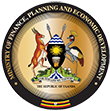Government continues to prioritize infrastructure development as an enabler of Uganda’s industrialization agenda by providing productive infrastructure for job and wealth creation. The Parish Development Model under the Infrastructure and Economic Services pillar places emphasis provision of necessary infrastructure to spur economic activities at the parish.
Uganda’s infrastructure development is partly concentrated around the new Growth Triangle that seeks to map and develop productive areas along the growth corridors. Taking advantage of the growth corridors is expected to spur equitable regional economic development among other development aspirations as well as influence the provision of better community-based transport services, rural access to energy sources, and basic urbanization incentives.
As such, investment in the energy sector resulted in an increase in access to grid electricity from 22% in FY 2016/17 to 24% in FY 2019/20. This has been possible on account of the commissioning of several Hydro Power Plants which increased the country’s generation capacity from 867 MW in 2014 to 1,346 MW in 2021. Similarly, the stock of paved road network increased from 3,981 km in FY 2014/15 to 5,878.5 km in 2022, which is 27.8% of the total national road network. In addition, the share of motorable road network in fair to good condition averaged 80% for paved and 71& unpaved roads.
